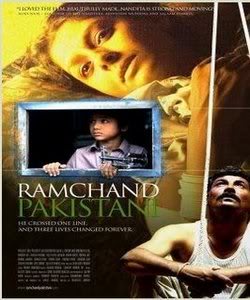Addicted to Love?

At the Café 9 on Zamzama Boulevard, a couple sits across from each other while the server flips TV stations to find something appropriate for the setting. As he flips through images of a protest on the BBC he settles on a song from the movie Love Aaj Kal, just in time for Ali to give Sara the roses he has been hiding in his backpack for Valentine’s Day.
This is Pakistan and while CNN continues to show images of political instability, the air in the coffee shops and sheesha lounges at least, is filled with love. In fact, you can change the proper nouns in the scenario and vary the level of product placement but the idea would be the same in Mumbai, Lahore, Dhaka or Goa. Society in the subcontinent is vastly more able and willing to express its attractions now than it was about 30 years ago and it is interesting to note how responsible film has been for this. The majority of the audience here absorbs Bollywood productions – Lollywood is suffering in the dark lately and Hollywood films are appreciated but Bollywood has the volume and language advantage - and besides a handful of other topics such as partition, mafia, disabilities etc., films in the subcontinent have repeatedly explored the concept of love and attraction in various guises.
I talked to two noted film makers associated with the Karafilm Society in Karachi and they both had similar views to share on the topic. Maheen Zia, founding member of the Karafilm society and jury member at a number of International Film Festivals, believes that being fond of song and poetry, people of the region are naturally romantic. She claims that this, coupled with the success of the musical, has led the development of the industry and the formula sticks because it works. “But,” she adds, “in my opinion it has also hampered the growth of this art form in the subcontinent. “.
It is a view that makes sense because throughout the existence of the film industry here, almost each mainstream film has been a musical and often times the strength of the lyrics in its songs can seal the fate of a film’s success at the box office. Also despite an abundance of history and figures, to date only a handful of films have been made in the region depicting them. Even ‘Gandhi’ was not an Indian production and there have been no films on Allama Muhammad Iqbal, Rabindranath Tagore, or even Muhammad Bin Qasim whose coming to the sands of Sindh changed the face of the region forever.
Shahid Shafaat, director of Balcony and 24 hours which was featured at the 2005 Karachi International Film Festival (by the Karafilm society) offers an interesting insight in that historically, the subcontinent has neither glorified nor even been marked with significant periods of war and raging conflict, although admittedly, it is now being hammered with those images of life. According to Shahid, “the myth and tales of folklore in the subcontinent are but populated with stories of our versions of Romeo and Juliet, Ranjha and Heer, Laila and Majnu, and that has been the predominant fantasy of society here.” He says that unlike now, in the past middle class society in the subcontinent was mostly concentrated into major cities and pockets of self sufficient agriculture communities, where the reality of family barriers and conservative ideals were breeding ground for the fantastical imaginings of true love. This is why he says that in our movies to this day, the hero is one that believes in love in its purest essence while the villain is usually materialistic and not unknown to represent the desire for sex.
But society has been changing too and Shahid insists film is only a minor player in the cultural change. According to him, there are two levels to consider, the progress of society and the progress of technology compared to the rest of the world. Shahid believes that technology drives mental growth and when technology has still not progressed enough, it would only make sense that films here will continue to be made on love. It is after all, as Maheen says ‘a primary impulse.’ The macro reasoning makes sense; society in the subcontinent has progressed to where it is not simply rural anymore and that change has brought about an independence that makes it easy to expect and express desires more openly. More people, especially women, are now living independently and choosing professions that interest them rather than help them survive and the advent of the cell phone has changed community building in a way that chai had not. Technology here though is still not at par with the western world and that shows in the films. A film maker here might have read 1984 but producing a movie as technologically heavy as Minority Report still seems a long way away in the subcontinent.
On a more micro level though, some of the youth hold movies significantly responsible for the change. While independence may have come from a progressing society, the moral and emotional lessons are still being provided through the movies and television that people are watching, and the more they watch the more they are influenced. It is not uncommon to hear of boys singing songs to their girls on a night long phone plan or stealing away from school to go watch the latest Khan extravaganza at the Cineplex. Girls also expect in the same regard and it is usually only a Bollywood-esque romantic exploration on Valentine’s Day that can save a relationship. Mainstream movies these days also make it easier for real life to relate, as when Karan Johar refers to social trends such as Facebook, Apple computers and Google-ing in his films. And while marriage has been a historical rite of passage here, an increasing number of youth are shying away from it – causality or correlation can each be argued but on why movies here refrain from exploring marriage, Maheen says, “Falling in love is the headiest part of a romance, staying in love takes work.” She claims that it makes sense that film about life after marriage might be considered by producers to be less attractive to audiences, though to her it signaled a lack of imagination on the part of the filmmakers.
A side development that cannot be ignored is the steady emergence of independent film makers and the re-emergence of Parallel cinema in the region. Film makers of films such as Ramchand Pakistani, Slackistan, and The People vs. Lyari Expressway in Pakistan accompanied by art cinema productions such as 3 Deewarain, Being Cyrus and Firaaq in India and Matir Moina in Bangladesh have deliberately been exploring topics besides just fantastical love and are eager to focus on more serious issues filled with realism. While coverage to such films is limited, mostly owing to limited marketing budgets, the cult audiences they form are often indicative of how an increasing number here are growing in their desire to have the world be explored in more ways than just through the prism of love. In time it would be interesting to note if society continues to choose mainstream cinema with its leaning towards attraction or blurs the distinction with just as much of the new waves’ naturalism.
by Syed Shayan Shakeel
Shayan Shakeel has previously written for Ink, Dawn and the Oklahoma Daily, as well as hosted ‘Salam Pakistan’ for the Indus Network in Pakistan. He is an avid film enthusiast and has previously studied and written about film at the University of Oklahoma.
Similar content
By Kerrine Goh
24 Dec 2013
By Kerrine Goh
22 Mar 2012
31 Aug 2013
By Kerrine Goh
02 Jun 2016
By Kerrine Goh
12 Feb 2012





